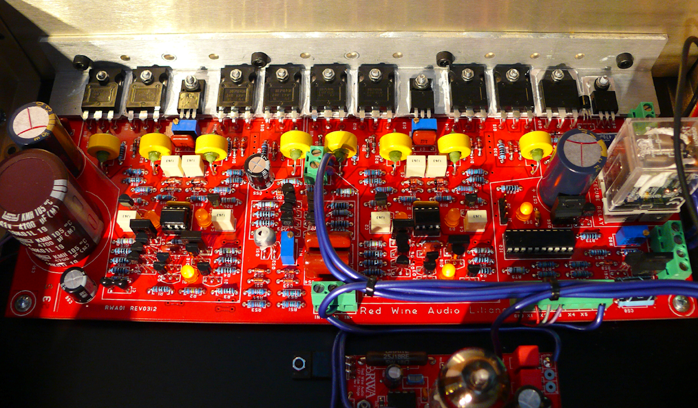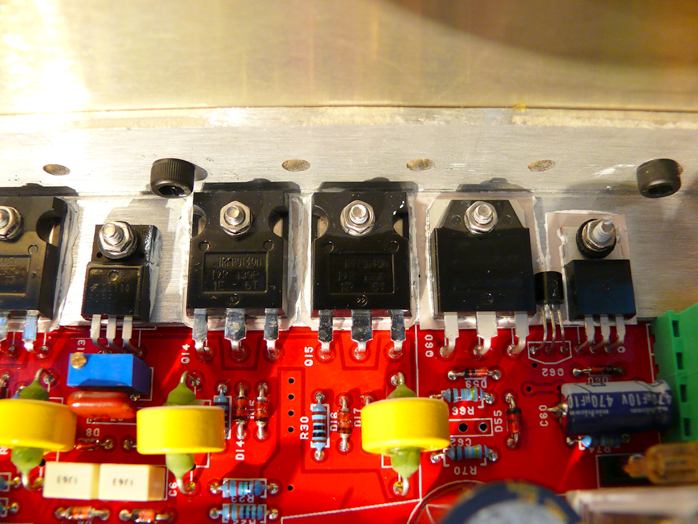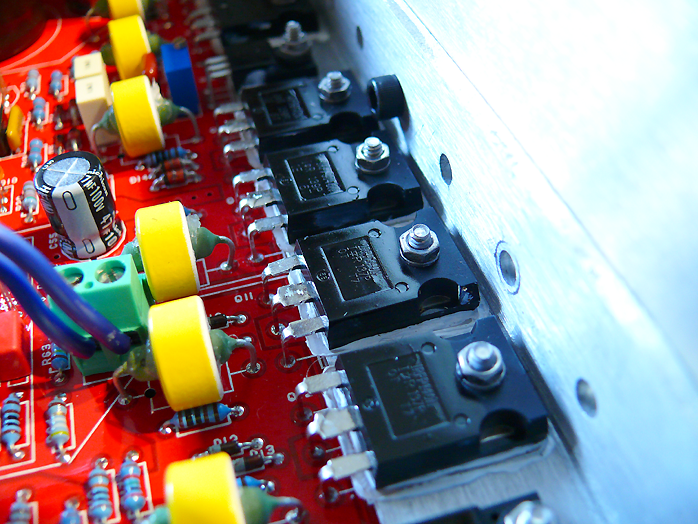This review page is supported in part by the sponsors whose ad banners are displayed below |
 |
 |
Happy news for those who weren't fond of it is the disappearance of the touch-sensitive but finicky membrane switch. The new burly two-click standard manual transmission eliminates wondering whether you've lost that magic touch because the membrane forgot your finger print. Even the most thick-skinned amongst us can power this up day in, day out.
|
 |
Informed shoppers knew going in that for the same coin other manufacturers offer a lot more cosmetic sex appeal. It's the one area where Vinnie's statement effort hasn't yet transitioned. "The enclosure is our largest to date and does not use the standard U-shape cover. It is our most solid box with separate sides and aluminum feet—with spikes that can be screwed in or not if you don't want to scratch furniture—but I agree on not being very sexy. I added the RWA logo and window on top to give some character but that is as far as I got wanting to have it ready for the RMAF 2011 show. I still want to experiment with different hard woods, aluminum finishes (besides black), acrylics etc. and revamp the line-up with new enclosures. The internals have been much improved with the class A tube input, A/B Mosfet output designs and the battery technology has improved with LiFePO4. Improving the appearance of the actual box needs to follow!"
|
 |
|
|
|
Class D haters should love this bank of output Mosfets and linear voltage regulators.
|
 |
The amp's left cheek is lined with 1/4" solid aluminum stock to which bolts the L bracket with its transistors. That hidden plate is in lieu of the usual ribbed/finned heat sink and explains why the amp gets warmer on one side. "On the aluminum bar with all the FETs is a thermal sensor. In case its temp exceeds 70°C, the micro controller turns off the output FETs. Those outputs are also protected from short-circuit conditions. Accidents like that happen and this design is essentially bullet-proof. I put it through torture tests and couldn't get it to fail."
|
 |
I'd seen similar dampers on tubes before but not lowly resistors. Below a final shot of Mosfet Alley.
|
 |
|
|
|
Orange LED current sources and fully discrete parts. "The two chips that look like opamp packages are opto isolators. The bigger chip is the micro controller. When we turn on/off, we control the gates of the FETs from the micro controller and use the opto isolators to avoid any noise entering the analog circuit. The front-panel switch simply tells the micro controller what mode to be in (off/charge, on/charge, on/pure battery). But actual battery power to the amplifier board does not pass through it (which is why there is no need for a big beefy switch). That big beefy relay in the back of the board takes on that duty. The pots are used to set bias, the DC offset to essentially 0V and another one to set the low-voltage cut-off when the battery drops outside its linear range after discharging over about 8 hours. I'm really pleased with the Liliana board. It was 2+ years in the making but I got the sound I've been looking for a long time. Way more extended in the top end and more natural than I could do with class D. You know I loved the low-powered Tripath sound but this really whips its butt in all regards except for power consumption and cost."
|
 |
Access to the lone JJ triode is by clever rotating window. This round acrylic slice eventually reveals a cut-out for easy access without having to unbolt the cover.
|
 |
"Unlike previous RWA designs, the SMART board functionality is built into the amplifier board (monitoring of the battery voltage, switching from AC to BATT mode etc.) That micro controller does it all. The board on the battery meanwhile balances each of the 16 cells during charging, prevents overcharging of the pack and allows the pack to be safely charged and used at the same time - which makes it one big-ass capacitor to clean up charger noise but does not eliminate it completely." Here we also see the three-pole power switch. Let's turn that on.
|
 |
  |
 |